Google IO 2019's best exhibit wasn't even there
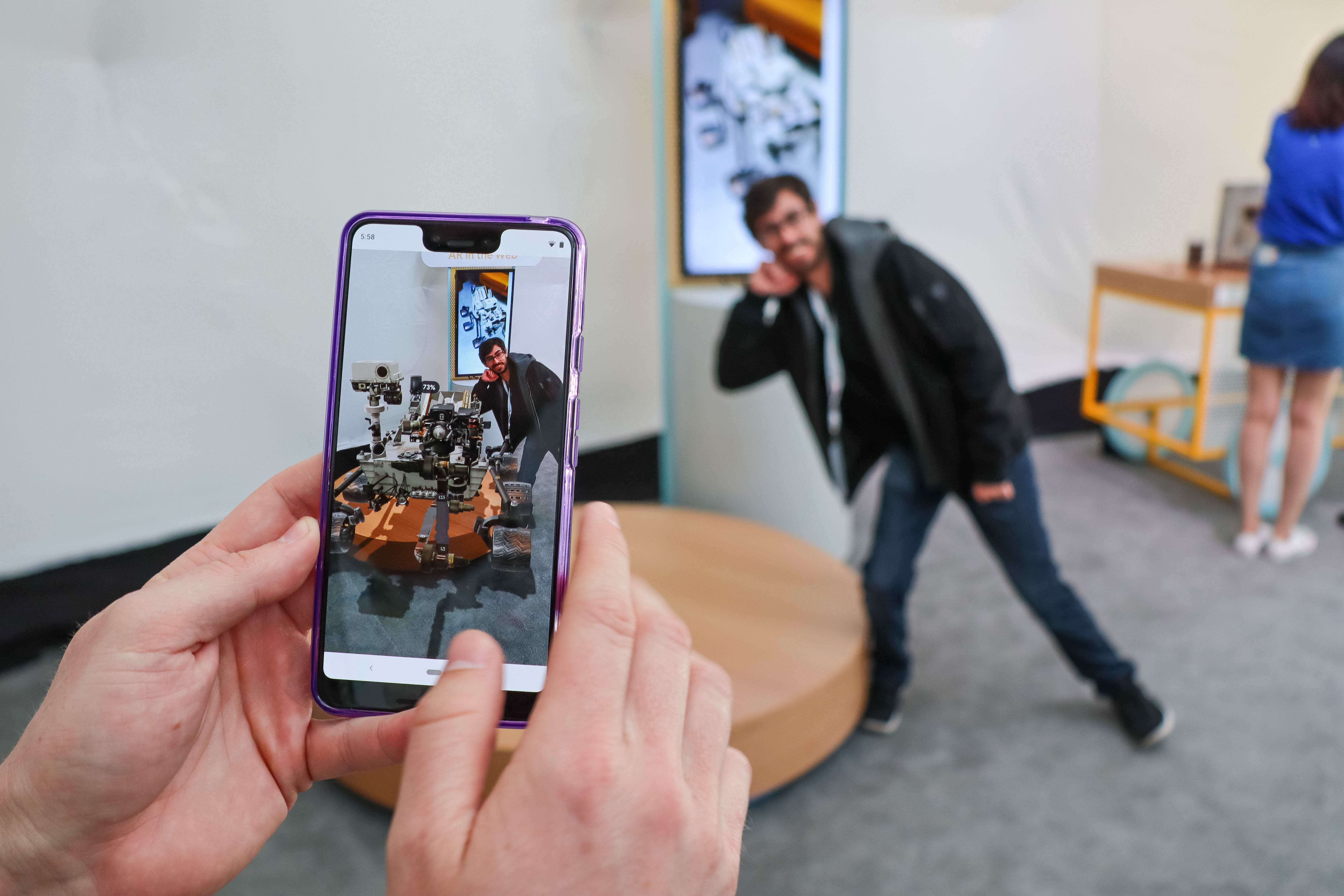
We got an update on Google's plans for augmented reality (AR) during Google IO 2019, and it looks like a lot of fun and games – with some promising advancements for even casual Google product users.
That includes folk who only use Google Search. During the keynote, a presenter showed how AR will be added to search results: go scrounging for info on sharks, and you'll be able to click a button to look into a lite camera app and place a 3D model of the shark in real life, as if to compare size. Another example showed a modeled skeleton-and-muscle arm flexing and relaxing – something far easier to see from different angles in AR than in a simple image.
After the keynote, we moseyed over to one of the Google IO 2019 sandboxes filled with different fun AR exhibits – all showing off different applications of AR tech that, strictly speaking, wasn't there at all.
Click through the gallery to see them all!
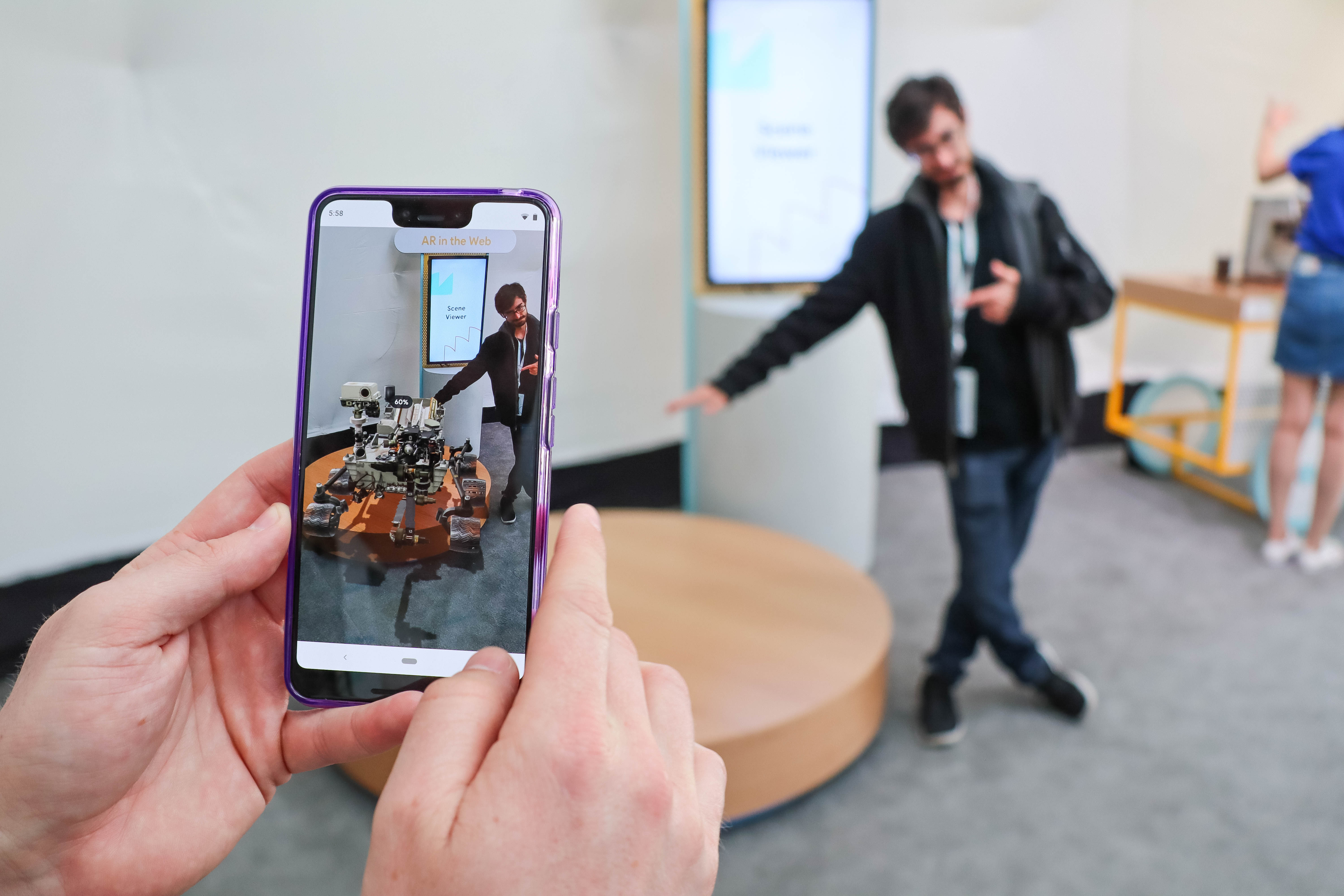
3D models from a browser
Like the shark during the keynote, this exhibit showed off a 3D model you could load up from a website and place in a camera app-style lens. In this case, a NASA website detailing the Curiosity Rover had a button that expanded this camera app-style screen for users to place their own galactic explorer in real space.
This is a cool, simple way to visualize objects in real space, which is especially useful if they're scaled right. But who doesn't want to pinch-and-zoom down to a cute mini rover?
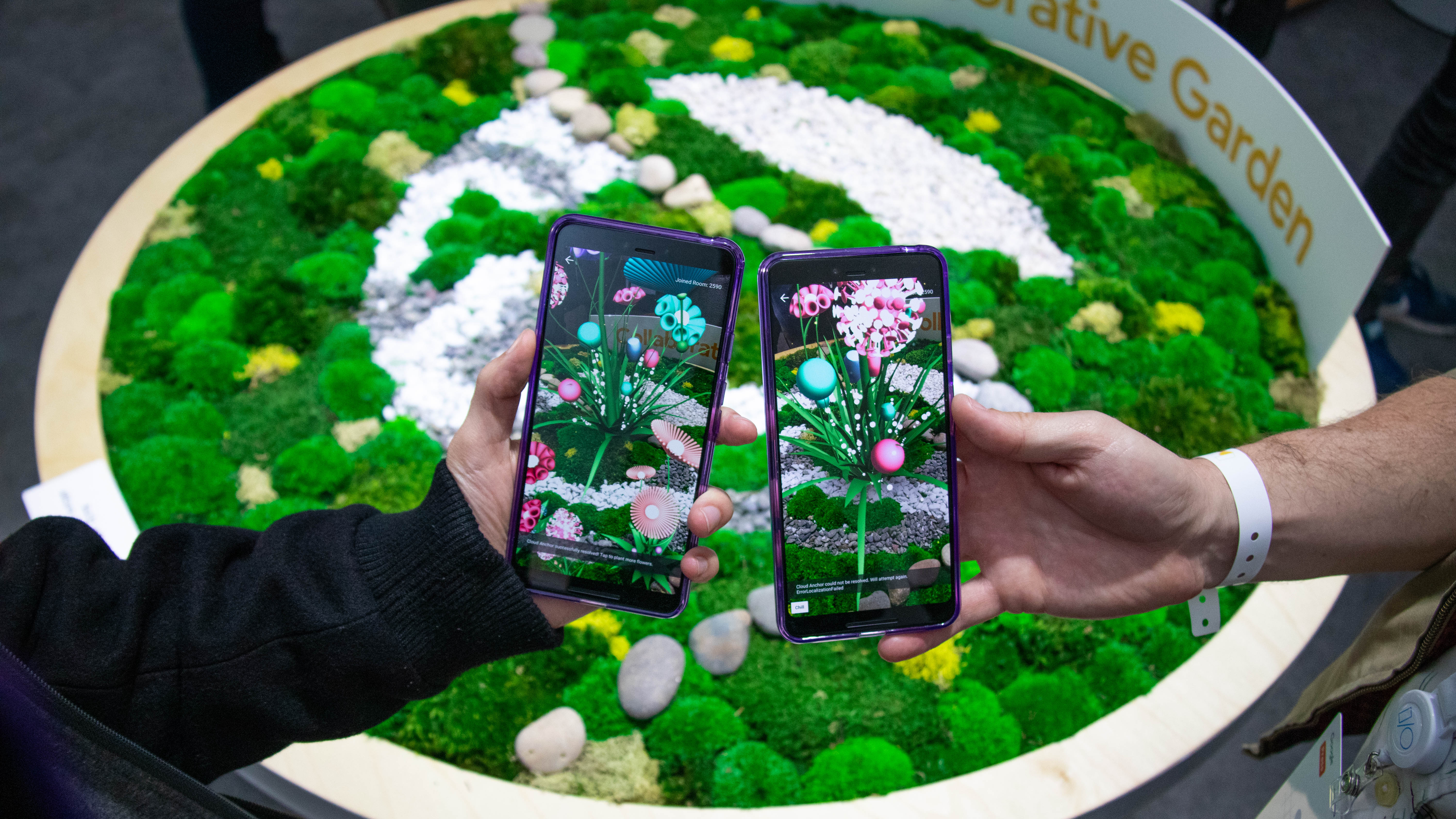
AR garden
This exhibit showed off a communal digital garden. Once you join a 'room' with other users, you see a garden with 3D flowers, ostensibly ones everyone else has planted.
The execution wasn't perfect, as we couldn't quite get one screen's flowers to immediately show up on another right after we planted them, but the idea is solid. What if you could add to each other's digital group projects – or play a communal game, like a massive persistent game of Pokemon Go?
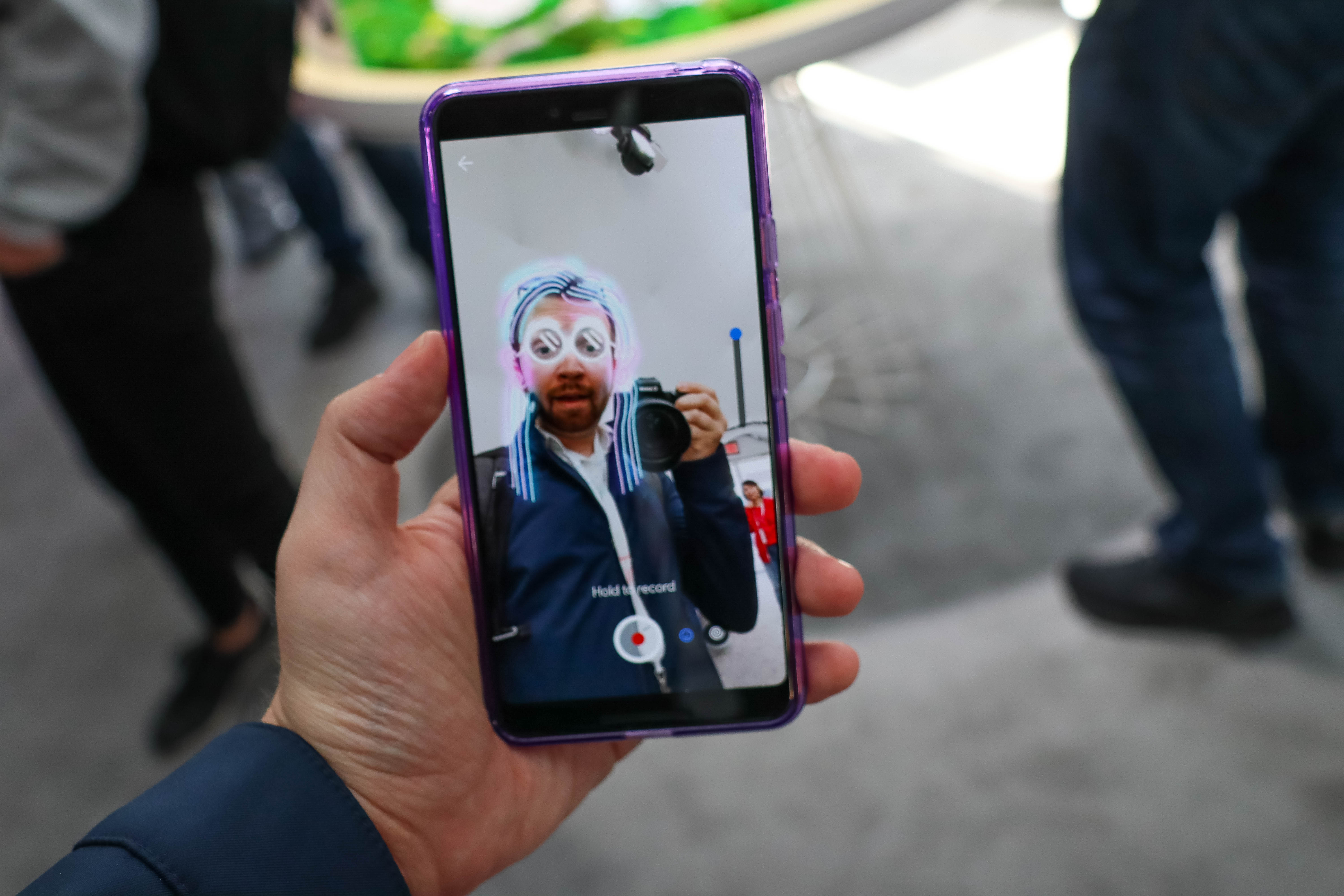
All the neon fit to print
Okay, this one isn't too groundbreaking – everyone's used a Snap filter. This exhibit floated neon glasses and hair over your face like a goofy AR mask for an EDM concert.
Still, it's pretty cool to have an overlay that played with light – that slider on the right darkened the screen until only the neon glasses and hair remained.
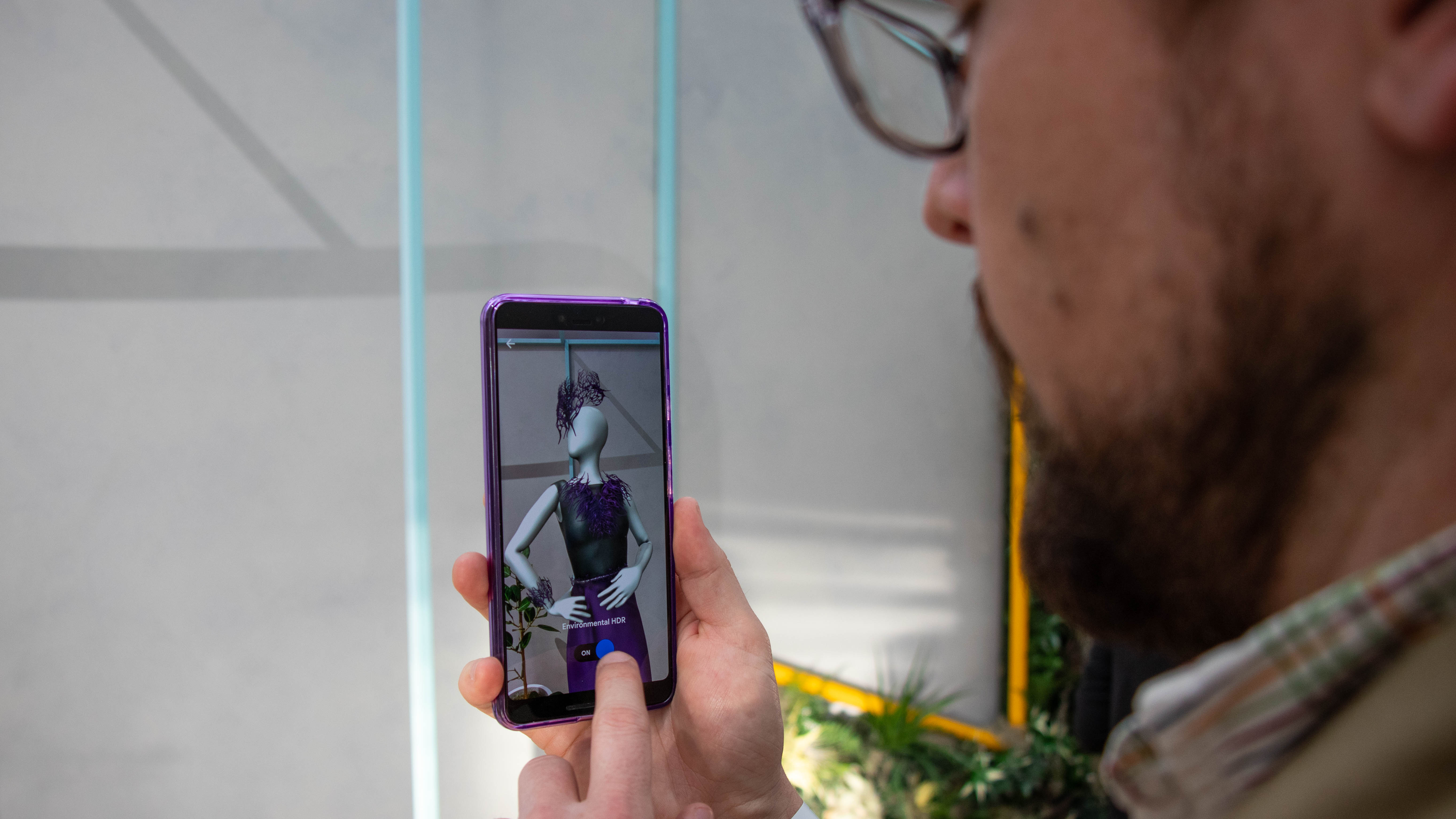
Room-lit mannequins
This is neat: a 3D mannequin showing off an adaptive HDR layer, which you could toggle on and off. Without the layer, though, the model looks very computer-generated...which is to say, out of place.
The HDR layer simulates proper lighting affects relative to the room; turn it on and the 3D mannequin looks more like it's in the same space, under the same light. It's a small but surprisingly effective layer of verisimilitude.

BaristAR
Last on our list is the simplest, which placed an instructional animation over an inert machine. This exhibit walked the user through the steps of, in this case, making a fine cup of coffee.
The applications here are obvious: using your phone, you can get instructions or directions that can be refreshed as simply as updating the software. In fact, Google used this feature in its official IO app as a navigational overlay to help attendees get around during Google IO 2019.
Sign up for breaking news, reviews, opinion, top tech deals, and more.

David is now a mobile reporter at Cnet. Formerly Mobile Editor, US for TechRadar, he covered phones, tablets, and wearables. He still thinks the iPhone 4 is the best-looking smartphone ever made. He's most interested in technology, gaming and culture – and where they overlap and change our lives. His current beat explores how our on-the-go existence is affected by new gadgets, carrier coverage expansions, and corporate strategy shifts.